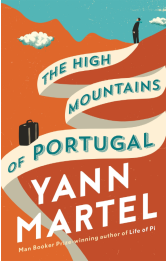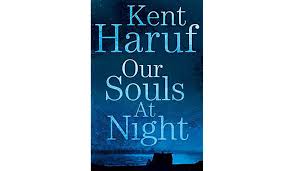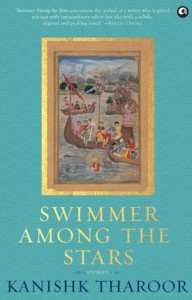Of Nayantara Sahgal’s “The Fate of Butterflies” and Toni Morrison’s “Mouth Full of Blood”
Nayantara Sahgal (b. 1927) and Toni Morrison (b.1931) have new publications out this past week. Nayantara Sahgal has a novella called The Fate of Butterflies. Toni Morrison’s Mouth Full of Blood is a collection of her non-fiction articles published over the past four decades. Every word chosen in these books is powerful. The two writers have witnessed significant periods of modern history — from the Second World War onwards to experiencing the joy of new democracies and its mantras of self-reliance, new freedoms as those made available with womens’ movements’ and the end of racial segregation, to the presently depressing times of rising ultra-conservative politics, authoritarian rule and sectarian violence. So when Nayantara Sahgal and Toni Morrison as seasoned storytellers pour their wisdom and experience into their writings without mincing words, you listen for the truths they share.
Nayantara Sahgal’s novella The Fate of Butterflies told from the perspective of a political science professor, Prabhakar, is a chilling tale about the all-pervading violence that exists in society. It is an insidious presence that is gradually transforming the rules of social engagement. It is licensing sectarian violence to such a degree that is fast becoming the norm rather than the deviant behaviour it is. The dystopic society Prabhakar finds himself in where people speak of “them” and “they”, mysteriously unnamned groups who are powerful enough to command and strike fear in the hearts of ordinary citizens. The horrors shared in The Fate of Butterflies of mass rapes of women and children, slicing bellies of pregnant women before sexually assaulting them, the homophobic behaviour of some expressed in the horrific violence towards individuals by setting them on fire after trying to castrate them, the quiet disappearance of kebabs and rumali roti from Prabhakar’s favourite dhaba with the excuse that Rafeeq the cook had disappeared making it impossible to offer Mughal cuisine to finding a naked body on the road wearing only a skull cap makes this fiction at times too close to reality. It seems to be a thinly veiled account of many of the witness accounts, oral testimonies and media reports of pogroms and communal violence that have been witnessed in recent years. Linking modern crimes to the historical accounts of Nazi Germany when such horrors unleashed on civil society where first witnessed and documented, Nayantara Sahgal, seems to be reminding the reader of the past being revisited today in the name of “nostalgia” and “harmony” when it is actually a crime against humanity, a human rights violation.
Lopez reminded his friends: no meat unless proven to be mutton, not cow. The Cow Commission went around making sure. He was thinking of becoming a vegetarian himself, he was scared as hell that his fridge might be raided and the mutton turned into beef. Suspects were being dealt with out on the streets, surrounded by camers and cheering beholders. He didn’t fancy that treatment for himself. It was far from reassuring in view of Rafeeq’s disappearance or dismissal. they drank their cloying Limcas, not sure how to find out about Rafeeq. The kaif’s water wasn’t safe and there was no mineral water left. All the bottles of mineral water had been commandeered by ‘them’, the ‘they’ and ‘them’ who came and went, mysteriously unnamed.
Lopez, who taught Modern Europe, said, “This tea party you were at, Prabhu, you said the Slovak was well ahead of the others.’
‘Why wouldn’t he be? They’ve have practice. They had a flourishing Nazi republic during the war, with a Gestapo and Jew-disposal and all the trimmings, and evidently there’s a tremendous nostalgia for those good old days when everybody was kept in line, or in harmony, as they called it.
Togetherness was the watchword. Not that the other speakers weren’t harking back to the glories of the 1930s, but I did get the feeling that some of them were sitting back and waiting to see which way the wind would blow before they risked investing in it. Only fools rush in. Compared with the rest of them the Slovak was the only Boy Scout.’
‘But most people are little people who have to go along with whatever’s happening,’ said Lopez, ‘either because they don’t know any better, or they have no choice and can’t afford to lose their wages or their lives.’
‘Most people,’ repeated Prabhakar, and again with stubborn emphasis, ‘most people everywhere, in Europe or here or anywhere else, only ask to be left in peace to live their lives. It doesn’t seem too much to ask.’
Toni Morrison’s A Mouth Full of Blood is a collection of her essays, speeches and meditations. They are a testament to her varied experiences in American history and literature, politics, women, race, culture, on language and memory. These are structured essays to occasional pieces of writing to moving eulogies as for James Baldwin to her Nobel Prize in Literature speech. It is a wide range of pieces which deserve to be read over and over again but it is the introduction to this volume entitled “Peril” that is exceptionally powerful. It is a commentary on contemporary world politics while focused on the importance of a writer and the significance of making art especially in authoritarian regimes.
In “Peril” Toni Morrison reasons that despots and dictators are no fools and certainly not foolish enough to “perceptive, dissident writers free range to publish their judgements or follow their creative instincts” for if they did, it would be at their own peril. Whereas writers of all kinds — journalists, essayists, bloggers, poets, playwrights — can disturb the social oppression that works like a coma on the population, “a coma despots call peace”. As she astutely points out that “historical suppression of writers is the earliest harbinger of the steady peeling away of additional rights and liberties that will follow”. She continues that there are two notable human responses to the perception of chaos: naming and violence. But she woudl like to add a third category — “stillness”. This could be passivity or dumbfoundedness or it can be paralytic fear. But in her opinion it can also be art.
Those writers plying their craft near to or far from the throne of raw power, …writers who construct meaning in the face of chaos must be nurtured, protected. …The thought that leads me to contemplate with dread the erasure of other voices, of unwritten novels, poems whispered or swallowed for fear of being overheard by the wrong people, outlawed languages flourishing underground, essayists’ questions challenging authority never being posed, unstaged plays, canceled films — that though is a nightmare. As though a whole universe is being described in invisible ink.
“Once upon a time there was an old woman. Blind but wise.” So begins Toni Morrison’s Nobel Lecture in Literature. Likewise pay heed when these two old and wise women speak. Pay heed.
22 February 2019









